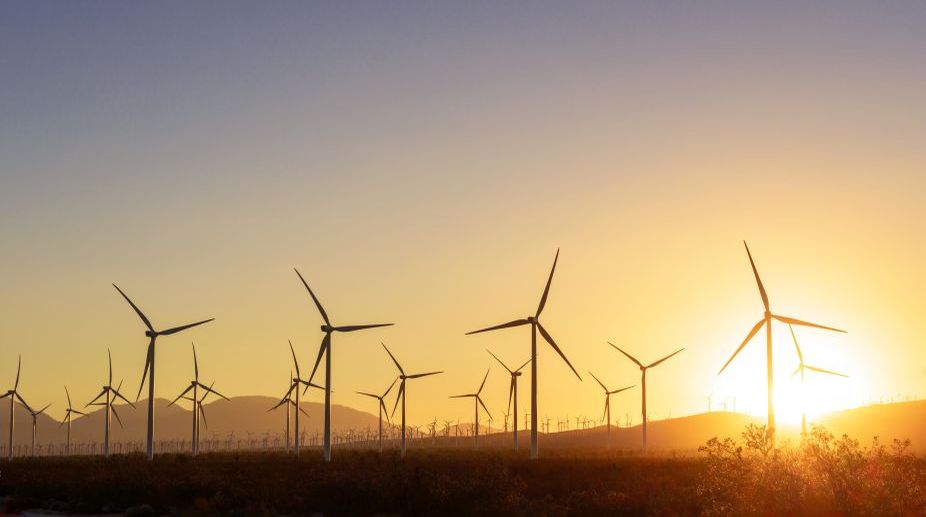Blue Carbon economy
Over the past decade, India has shown commendable leadership in the global climate action space.

Representational Image (PHOTO: Getty Images)
India has attained the fourth position globally in installed wind power capacity after China, US and Germany as a result of various steps in the "right" direction, the Economic Survey said on Tuesday.
With the legal framework in place for the International Solar Alliance (ISA), the brainchild of Prime Minister Narendra Modi and launched during the UN climate summit in Paris, ISA will be a "major" international body headquartered in India, it added.
"As a result of various actions in the right direction, India attained 4th position in global wind power installed capacity after China, USA and Germany," it said.
Advertisement
It said that currently, India's renewable energy sector is undergoing transformation with a target of 175 GW of renewable energy capacity to be reached by 2022.
In order to achieve the target, the major programmes on implementation of Solar Park, Solar Defence Scheme, Solar scheme for Central Public Sector Undertakings, Solar photovoltaic (SPV) power plants on canal bank and canal tops, solar pump, solar rooftop among others have been launched in recent years.
"A capacity addition of 14.30 GW of renewable energy has been reported during the last two and half years under Grid Connected Renewable Power, which include 5.8 GW from Solar Power, 7.04 GW from Wind Power, 0.53 GW from Small Hydro Power and 0.93 GW from Bio-power," it said.
As on October 31, 2016, India achieved 46.3 GW grid-interactive power capacity, 7.5 GW of grid-connected power generation capacity in renewable energy, and small hydro power capacity of 4.3 GW.
In addition, 92,305 solar pumps were installed and Rs.38,000 crore worth of Green Energy Corridor is being set up to ensure evacuation of renewable energy.
With India's initiative, ISA envisaged as a coalition of solar resource-rich countries to address their special energy needs, will provide a platform to collaborate on addressing the identified gaps through a common and agreed approach.
"24 countries have signed the Framework Agreement of ISA after it was opened for signature on November 15, 2016. ISA is expected to become inter-governmental treaty-based organization that will be registered under Article 102 of the UN charter after 15 countries ratify the Agreement.
"With legal framework in place, ISA will be a major international body headquartered in India," it said. (MORE) PTI TDS
The survey pointed out that the government has established the National Adaptation Fund for Climate Change to assist states and UTs to undertake projects for adaptation to climate change.
"Rs 182.3 crore has been released for 18 projects for sectors including agriculture and animal husbandry, water resources, coastal areas, biodiversity and ecosystem services.
"India is also one of the few countries in the world to impose a tax on coal. This coal cess which has been renamed as 'Clean Environment Cess' in the Union Budget 2016-17 funds the National Clean Environment Fund (NCEF)," it said.
The Clean Environment Cess has been doubled in the 2016-17 budget from Rs.200 per tonne to Rs.400 per tonne, the survey said.
It said that the proceeds of the NCEF are being used to finance projects under Green Energy Corridor for boosting the transmission sector, Namami Gange, Green India Mission, Jawaharlal Nehru National Solar Mission, installation of SPV lights and small capacity lights, installation of SPV water pumping systems, SPV power plants and grid connected rooftop SPV power plants.
The survey states that in January 2016, Government amended the National Tariff Policy for electricity. The tariff policy amendment has a focus on the environmental aspect with provisions such as Renewable Purchase Obligation in which 8 per cent of electricity consumption excluding hydro power shall come from solar energy by March 2022.
It also has provision of Renewable Generation Obligation in which new coal or lignite based thermal plants after specified date will also establish/procure/ purchase renewable capacity.
It has the provision of bundling of renewable power with power from plants whose Power Purchase Agreements have expired or completed their useful life, no inter-state transmission charges for solar and wind power and procurement of 100 per cent power produced from waste-to-energy plants, among others.
India ratified the Paris Agreement on October 2 last year and the country's comprehensive target is to lower the emissions intensity of GDP by 33 to 35 per cent by 2030 from 2005 levels.
It also targets to increase the share of non-fossil fuels based power generation capacity to 40 per cent of installed electric power capacity by 2030 and to create an additional (cumulative) carbon sink of 2.5-3 Gt CO2 e through additional forest and tree cover by 2030, it said.
Advertisement